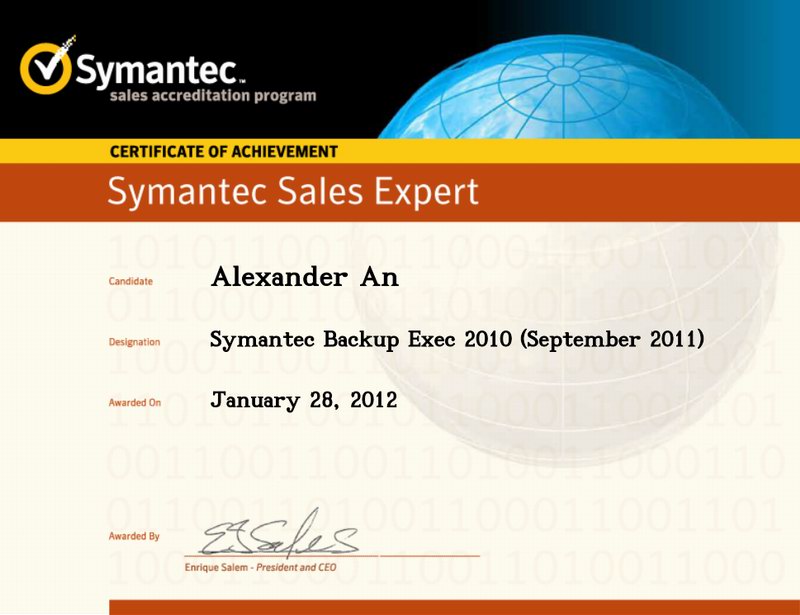

If you are using Symantec's Volume Snapshot Provider (VSP), then it is best to reserve a dedicated disk to store the VSP cache.
Symantec backup exec 2014 recovery turn on network free#
Therefore, you should ensure that a server volume always has enough free space to cache any file changes that may occur during a backup. This data has to be written somewhere while the volume is frozen for backup. However, updates to user files also trigger Master File Table (MFT) updates. At the very least, a few user files may change. As tempting as it may be to set this as the default option, it is usually best to review each volume individually to see if enabling the Advanced Open File Option module is appropriate for that volume based on the types of data that the volume contains.īecause of the way that the Advanced Open File Option works, it is a good bet that some data is going to change between the time that the backup starts and the time that it ends. Configuring Backup Exec Advanced File Optionīackup Exec can be configured so that it automatically uses the Advanced Open File Option module on all volumes. You should use the Advanced Open File Option to backup data types for which no product-specific agent exists. While it's true that purchasing additional agent licenses will increase the cost of your backup, doing so ensures that your data will be backed up properly. If there is a Backup Exec agent that was specifically designed for the type of data that you are backing up (such as Exchange or SQL), then you should use that agent. If you were to restore such a backup, then you may end up corrupting the database in the process. If you attempt to back up an active database using the Advanced Open File Option, there is a chance that your snapshot may capture a partial transaction.

Other types of data, such as databases, can be very problematic. Some types of data, such as Microsoft Word documents, work really well with snapshot backups. You should only use the Advanced Open File Option as a generic solution for backing up open files. The local volume is both NTFS and it is a local volume to the media server.As the name implies, the Advanced Open File Option is a separately licensed add-on that works by taking a point-in-time snapshot of the volume that is being backed up, and then basing the backup on the snapshot. Job ended: Tuesday, Augat 4:09:17 PM Completed status: Failed Final error: 0xe0001204 - The path on the Backup Exec server for staging temporary restore data when restoring individual items must be on a local NTFS volume on the Backup Exec server. I have attempted the following: changed the registry settings to force the "OnHostTemp" to a different drive/volume and I have also modified GRT settings to point away from the "C" drive and that hasn't worked.Īs far as the individual mailbox restore, I have attached this error message: I'm restoring 400 gig Mailbox file and the "$Backup Exec Default Data$" folder that is created during the backup continuously routes itself to the "C" drive where there isn't enough space to accommodate the growth of the DB.

I'm just unable to re-direct the "$Backup Exec Default Data$" staging area to a different drive/volume to complete the restore. On the restoring the mailbox DB it's self there aren't any errors.


 0 kommentar(er)
0 kommentar(er)
